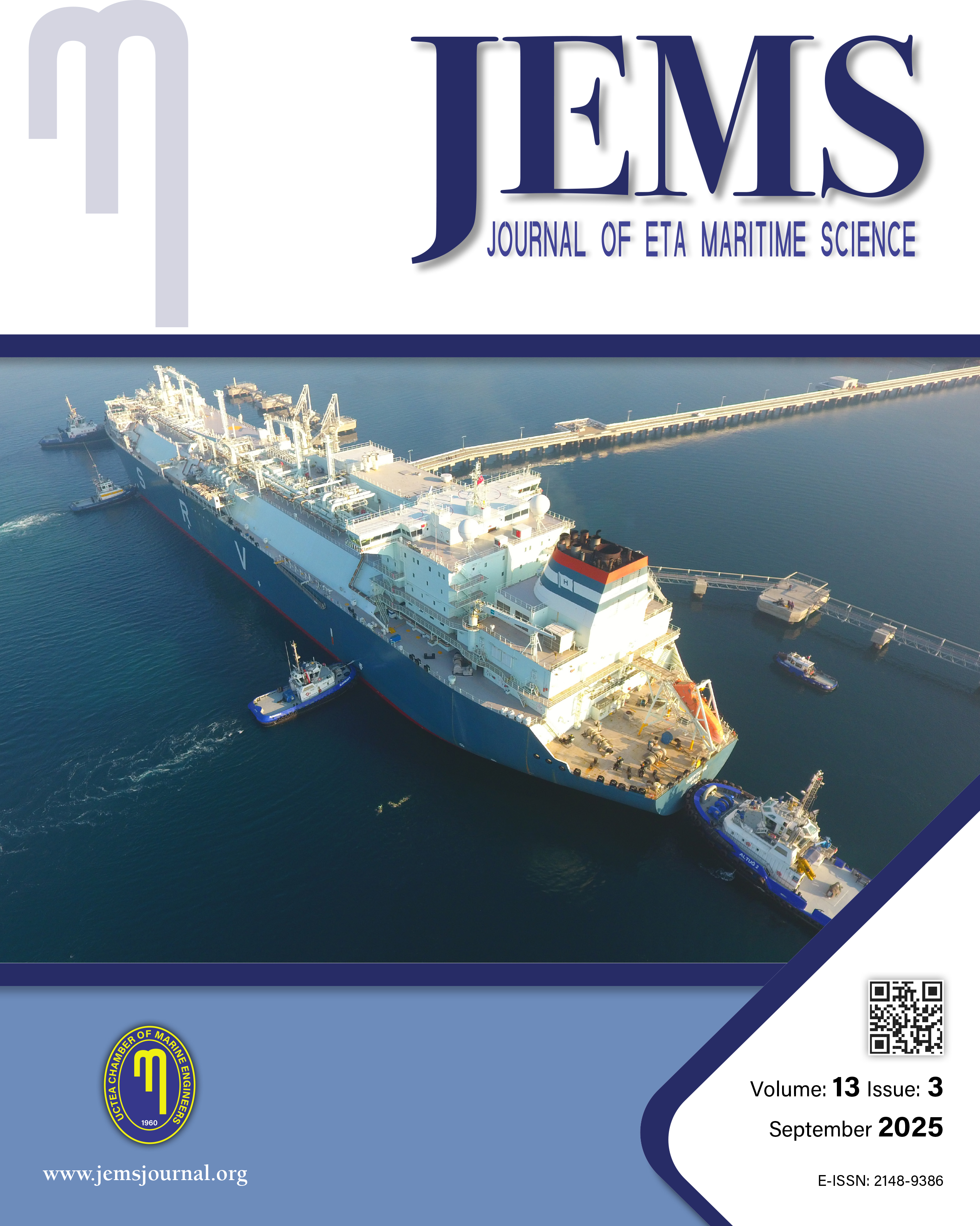

JEMS apply the Creative Commons Attribution NonCommercial 4.0 International Licence to all manuscripts to be published
An effective CFD approach to modeling barnacle fouling: Comparing five turbulence models
Utku Cem KarabulutDepartment Of Naval Architecture And Marine Engineering, Bandirma Onyedi Eylul University, Balikesir, TurkeyThis study presents a computationally efficient approach for predicting frictional resistance caused by barnacle fouling using steady RANS-based simulations. Three barnacle types with varying surface coverage levels were modeled using experimentally derived roughness parameters applied to flat plates in a two-dimensional domain. Five eddy-viscosity turbulence models Standard k-ϵ, Realizable k-ϵ, v^2-f k-ϵ, Wilcox k-ω, and SST k-ωwere evaluated to assess their accuracy in capturing the hydrodynamic effects of roughness. Wall functions incorporating Grigsons roughness correction were applied to represent the roughness-induced velocity profile displacement. The simulations were performed under steady-state RANS assumptions at Re = 1.8-4.8×10⁶ (model scale) and Re = 2.5×10⁹ (full scale). Ten barnacle-fouling configurations, covering three barnacle sizes and surface coverage levels ranging from 10% to 50%, were analyzed to represent realistic roughness conditions. Results were validated against experimental data at model scale and extrapolated data at full scale. Grid convergence and uncertainty analyses confirmed that discretization error was the dominant numerical uncertainty. Among the models, Realizable k-ϵ and SST k-ω provided the best agreement with experimental and extrapolated results, particularly for S-type and M-type barnacle surfaces. The study suggests that simple numerical techniques, when combined with appropriate turbulence models and validated roughness functions, can provide reasonable estimates added resistance due to biofouling, within the scope of the modeled conditions. These findings support the use of efficient CFD workflows for performance prediction in naval and commercial ship applications.
Keywords: Barnacle Fouling, Turbulence Models, Ship Resistance, Modified Wall Function Method, CFD ValidationManuscript Language: English










